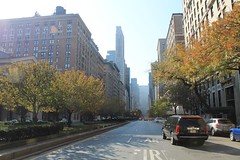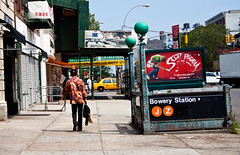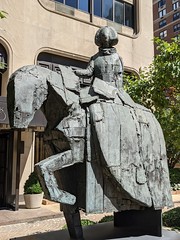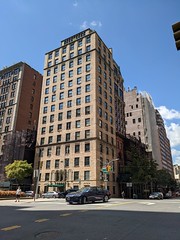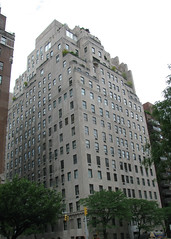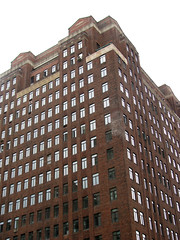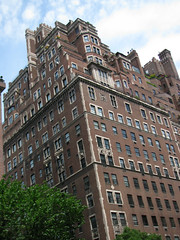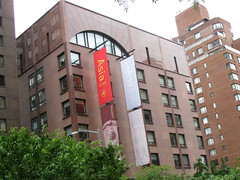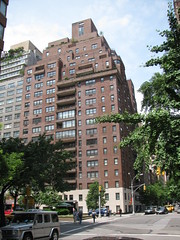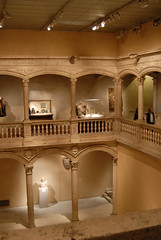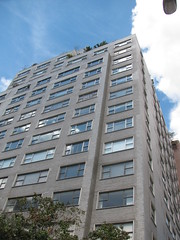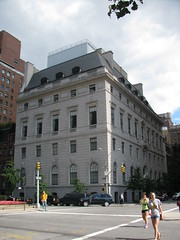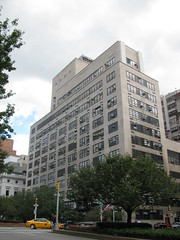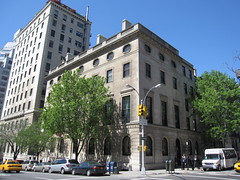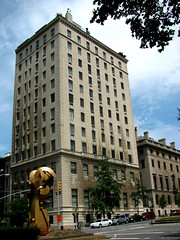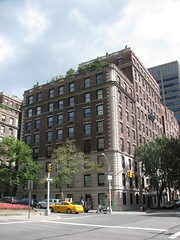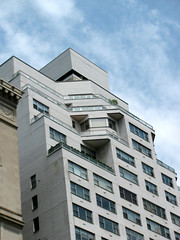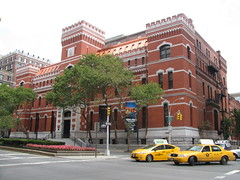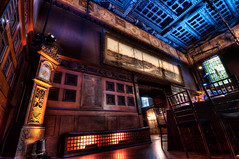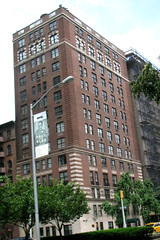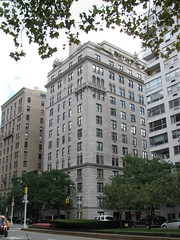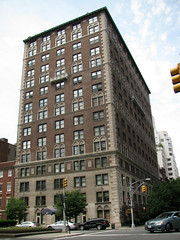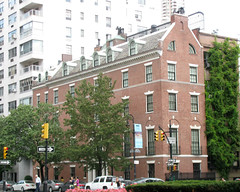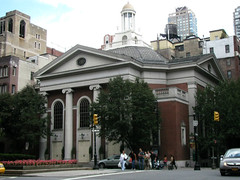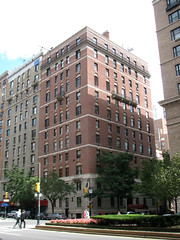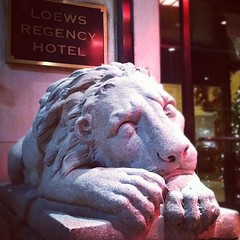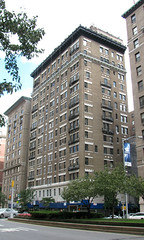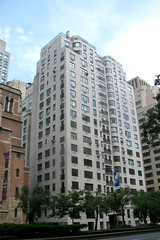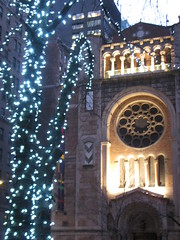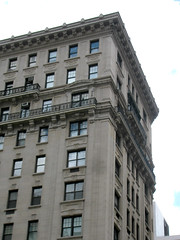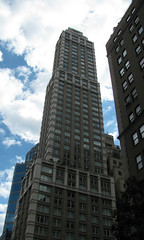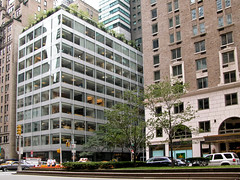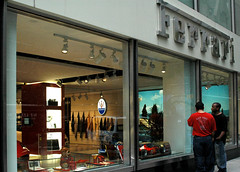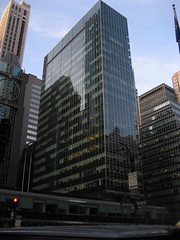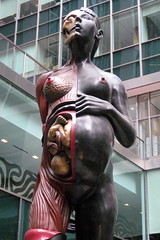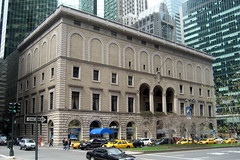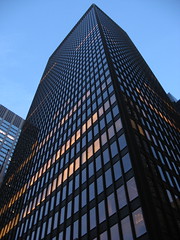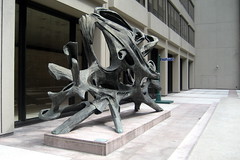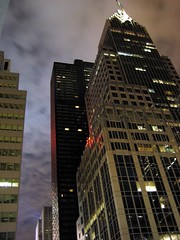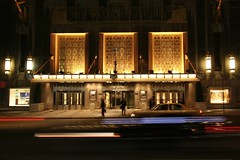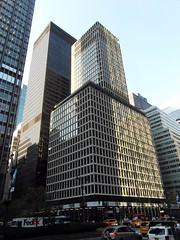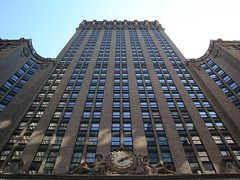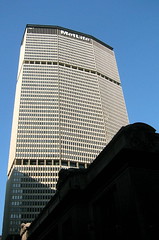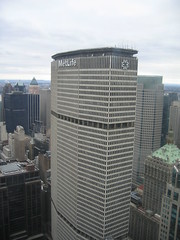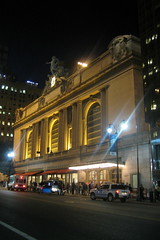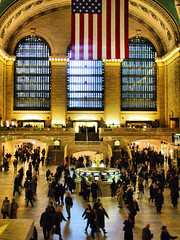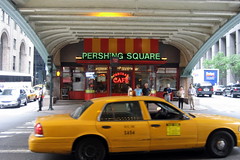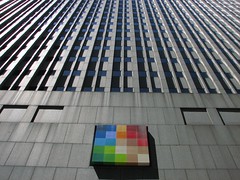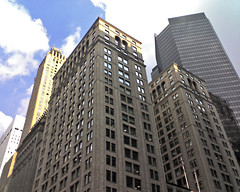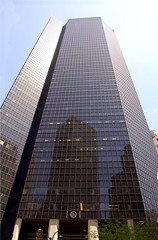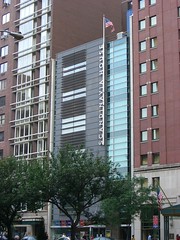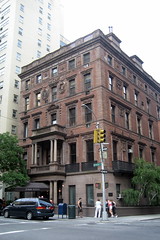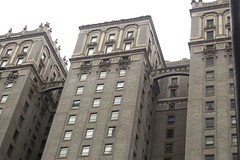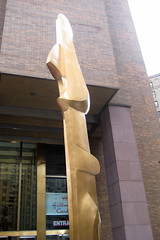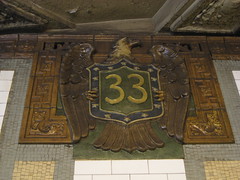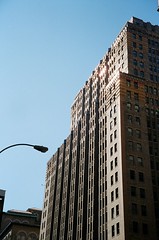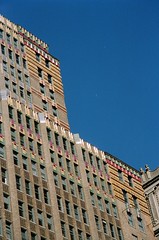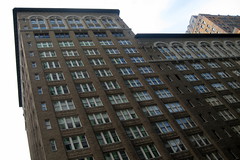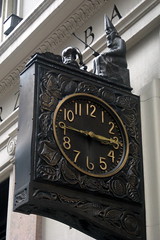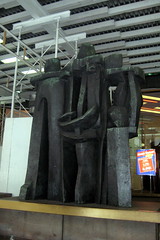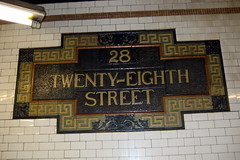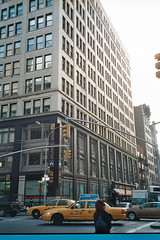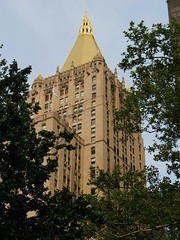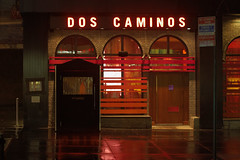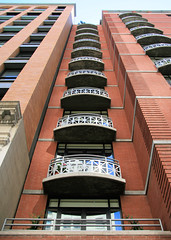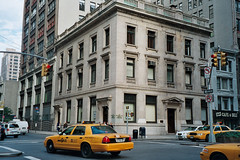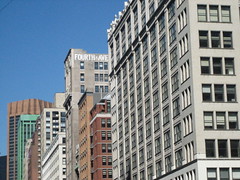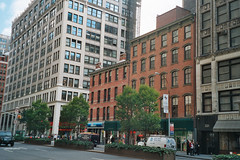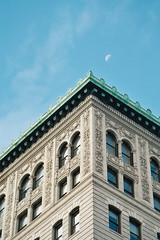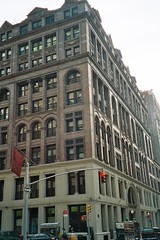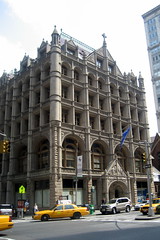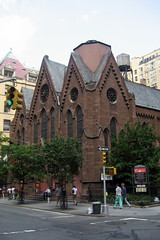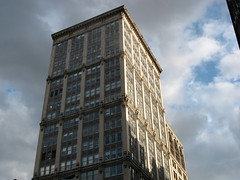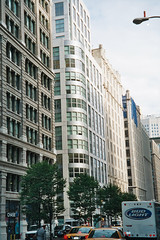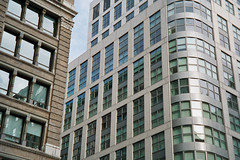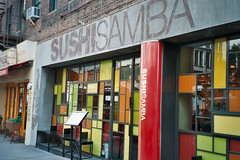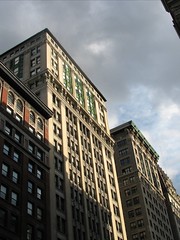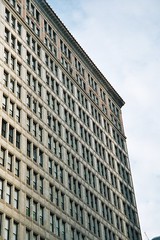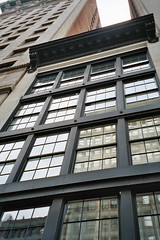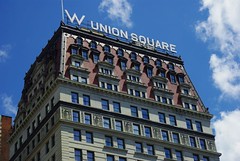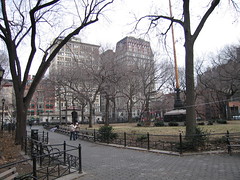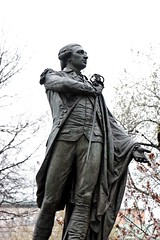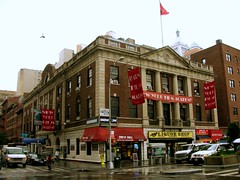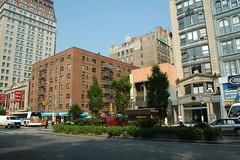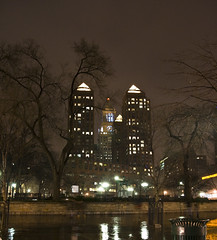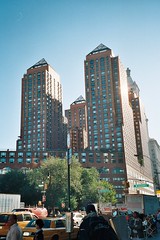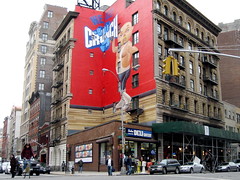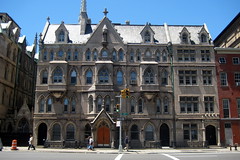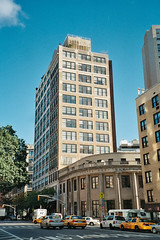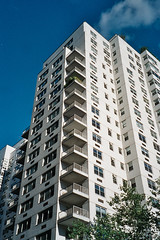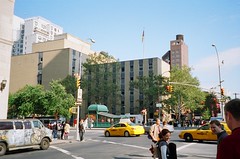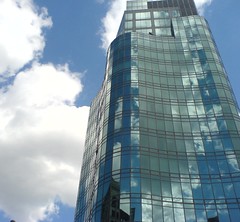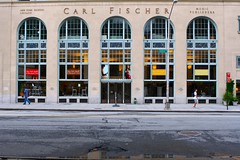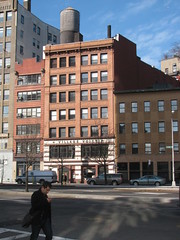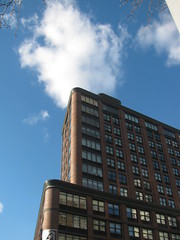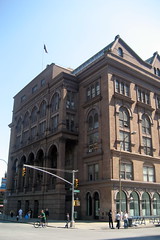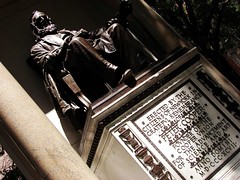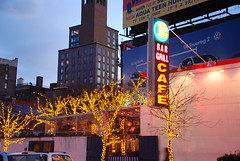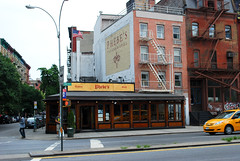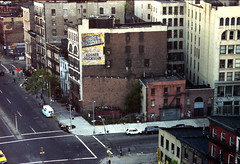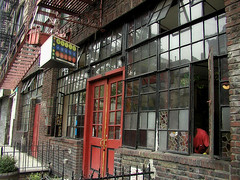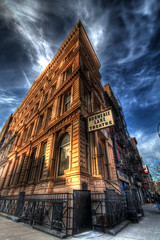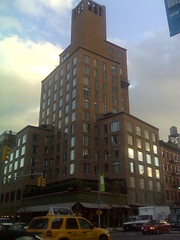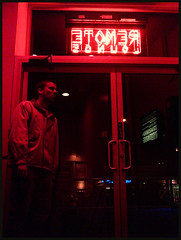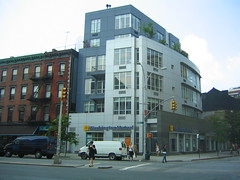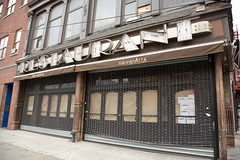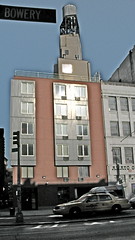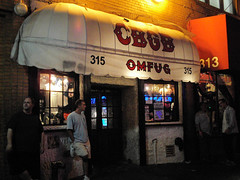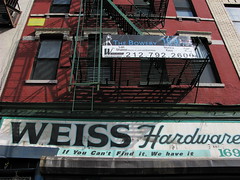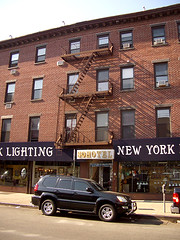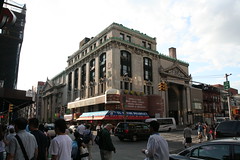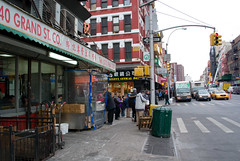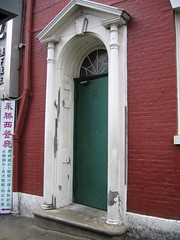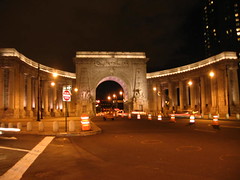West:
Corner: Adams Co. Restaurant Equipment Supply.
The Bowery restaurant supply district has been
around since the 1930s; one theory is that
Skid Row's residents provided a steady supply of
cheap labor to unload crates of plates and other
heavy wares.
280: Was the Uncle Sam Hotel
and Eureka House, two 1890 lodging houses
276: Feature, Inc. art gallery
270: Was Majestic House, lodgings
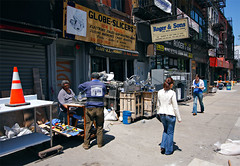
268: Roger & Sons Food Service Equipment
266: Globe Slicers, new and rebuilt--since 1947.
From 1973-75, Deborah Harry and Chris Stein of Blondie lived
here; their place became a sort of clubhouse for bands playing
at CBGBs.
264: Kos, a members-only club
owned by Lenny Kravitz and Denzel Washington.
The name is Persian slang meaning ''pussy.''
262: Was Schirmer's Hotel
258: Home of the performance space
Dixon Place. I saw Samuel Delaney and
John Crowley, two of my favorite writers, read
here one night.
250: Paragon Restaurant World, since 1933.
Being replaced by an eight-story hotel.
248: Kinco Bakery Showcases & Supplies has
a model kitchen for demonstrating baking techniques.
246: Bow Martial Arts
240: Bari Restaurant & Pizzeria
Equipment Corp., since 1950--named for the owning
family's
ancestral town in Italy. Has all your pizzeria needs,
including those life-size pizza chef statues.
238: Albanese Meats & Poultry
Corner (1 Prince): Bari Gallery Furnishings
|
In 1832, the world's first streetcar ran from
this intersection to Union Square.
|
|
230: Prince New and Used Restaurant
Equipment Supplies
226-228: Economy Refrigeration, Heating
and Ventilation Supply
The Bunker
222: This 1884 Queen Anne building was
the Young Men's Institute, the first YMCA
branch in New York City; after the Y moved
out in 1932, painter
Fernand Leger used it as
a studio in 1940-41, and writer
William Burroughs used the locker room as his
"Bunker" (1975-81), which he shared with
painter
Mark Rothko. Later the loft was home to abstract
expressionist
Michael Goldberg, who died here in 2008.
The ground floor is Chairs & Stools Etc.
220: City Restaurant Equipment Corps
218: Prince Hotel, flophouse whose owners
plan to convert it to luxury condos. At the same address is
the Pioneer Bar, reflecting the gentrifiers'
self-image as brave frontiersmen.
216: Century Kitchen Equipment Inc.
212: Vegas Co. Bakery Pizzeria and Restaurant
Equipment
210: Marks Restaurant Equipment is jammed
to the ceiling with kitchen bargains and oddities. Was Sam Tell in the City Food Service
Equipment & Supplies.
208: Chair Factory
206: J&D Restaurant Equipment Corp.
204: Admor Restaurant Supplies
202: Paul Ruggiero
200: Supplies Corp.
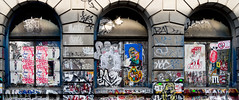
190 (corner): Built in 1898, designed
by Robert Maynicke. Long abandoned by 1966, when
it was bought by photographer Jay Maisel,
who still lives there with his wife and daughter,
the sole occupants of the building's 72 rooms.
(Roy Lichtenstein rented out the fourth floor
for a while.) The exterior is often used
as a canvas for street art; Keith Haring used
to chalk babies on it.
Maisel's purchase is
seen as a real-estate fairy tale: His
$102,000 purchase is now worth $30-50 million.
But it was a very different neighborhood in those
days: ''Every single thing that can come out of
a human body has been left on
my doorstep,''
Maisel said.
|
As many as a thousand New Yorkers, victims of
an elaborate practical joke, showed up here in
August 1824, ready to take part in a project that would
saw Manhattan off its bedrock so that the island
could be reversed and the "sagging" Battery
connected to the Bronx.
|
|
188 (corner): A
brick building
also known as 2-4 Spring.
184: All Care Business Machines
|
|
|
East:
In 1897, there were 18 bars on the east side of The Bowery
in the three-block stretch between Houston and Delancey.
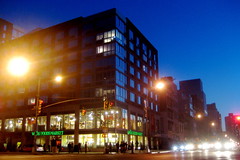
A long-vacant lot transformed into a residential development that
also provides space for the Chinatown
YMCA and a University Settlement community
office. At the corner with Houston used to be
Fred Bunz's hash house, which Jack Kerouac called
"the great bum's Howard Johnsons of the Bowery."
Pig brains were 15 cents.
275: Was The Nassau, aka The Star,
1890 lodging house

269: M. Levin Inc. Showcases, retail displays
since 1901
267: Site of Sammy's Bowery Follies,
where tourists could see ''a collection of old-timers,
eccentrics, geeks and the more presentable of the
bums'' (Low Life). Earlier was John McGurk's
The Mug, where the drinks came with knockout drops.
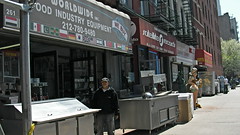
263: Worldwide Food Industry Equipment
is on the site of the Hotz Assembly Rooms.
259:
Satellite Records, well-stocked dance-music store.
257: In the 1850s, this was the
address of the Bowery Concert Hall (later the
Melodeon), which offered "Music for the Million."
It was also the Palace
of Illusions, featuring Lady Mephistopheles.
|
|
245: Bari Restaurant Equipment Depot
241: Sunshine Hotel, flophouse that was
once the residence of cannibal Daniel Rakowitz.
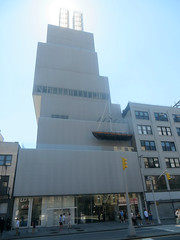
235: Former SoHo institution opened in
2007 in a stylish stack of zinc boxes designed by
Sejima + Nishizawa, Tokyo museum specialists. I feel
like a party pooper pointing out that the Lower East
Side is one of America's most historic neighborhoods
--development like this means the Landmarks Commission is
not doing its job.
Once the address of the London Theater, variety.
231: Daroma Restaurant Equipment;
"7 Floors of Restaurant & Kitchen Equipment
and Supplies"

227-229: A Christian relief effort started in 1879.
225: Salvation Army Chinatown Corps
219-221: Chair Up Inc., restaurant
furniture
217: Mission, swanky bar that offers
$200 bottle service. The irony curdles.
215 (corner): A&P Restaurant and Deli
Equipment
|
|
213: Regent Restaurant Equipment
209: Balter Sales Company has bargains
on designer tableware.
207: Congee Bowery, 2005 spinoff of Allen
Street's Congee Village. Was Mazer Kitchen Equipment, since 1946.
This address was the Comanche Club, the
clubhouse of Big Tim Sullivan, Tammany Hall's
boss of the Bowery. Of its 1892 opening, the
New York Times wrote: "Among those present were Mr.
'Silver Dollar' Smith, Mr. 'Dry Dollar' Sullivan
...and Barney Rourke, the Napoleon of down-town politics."
Earlier it was Bertrand Myer's concert saloon,
of which an 1890 guidebook noted, "The place is
crowded with women nightly, who smoke cigarettes
and drink gin."
201: This was the address of
Tony Pastor's
Opera House, where vaudeville was invented.
Later it was the site of the People's Theater,
associated with such Yiddish theater greats
as
Boris Thomashefsky,
Rudolph Schildkraut and Max Gabel.
Abraham Goldfaden's 1908 funeral drew 75,000 people here.
199: NoLIta Place, luxury apartments named
for the North of Little Italy acronym. On the ground
floor is a sprawling club complex called
BLVD,
which includes a basement music space called
Crash Mansion.
197: Andrews Hotel; rooms at this
flophouse went for $9 a night in 2002.
195: Janos Gat gallery
193: Advance Kitchen Supplies, noted for
its wide array of cooking pots, is on the site of Military Hall,
a historic assembly space. "Here, in the 1840s,
New York City policemen first agreed to wear uniforms and in
1863 the tinsmiths of New York founded the first sheet-metal
workers union in the country. In 1868 a group of actors and
entertainers founded the Elks, and in 1892 the radical Emma
Goldman defended her lover's assassination attempt on Henry
Clay Frick."--Curious Shopper's Guide
191: Leader Restaurant Equipment,
beautiful imported goods from China and Japan.
185: Was the Savoy Hotel--a flophouse.
183: Bowery Restaurant Supply was
The Puritan Hotel, another flophouse--
you could get a room here for 40 cents in 1939.
|
|
